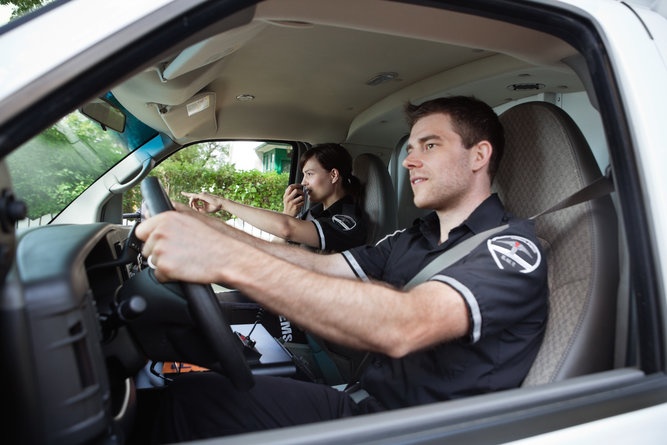
The patient was practically comatose by the time you arrived on scene. A gastric cancer patient, he had lost his ability to effectively swallow and had regurgitated once he arrived home from his chemotherapy treatment. As your partner flips open the airway bag, you attach the monitor and note a bradycardic rate of fifty-four. You set up for an IV while your partner cranks on the O2, only to realize the tank is empty. He dashes out to the truck for a replacement while you attempt the IV. Valuable seconds tick by. The patient is breathing on his own, yet gasping, and you fail to notice the remnants of vomit and bile rimming his mouth. With each passing minute, he inhales more of the acidic stomach contents lodged in his airway. His prognosis is quickly devolving.
A critical step was missed in this scenario. Instead of reaching for the IV or racing out to the truck, one of you should have been reaching for the portable suction unit. As so often can happen on emergency scenes, we become distracted and lose focus. This patient desperately needed to be suctioned, and then bagged, which not only would have prevented additional aspiration, but may have corrected the bradycardia, as well.
But this patient’s problems started well before you were called to the scene. His medical history should have been a red flag, for patients suffering from various forms of gastric cancer can be at risk for aspiration, and the acidic gastric juices that are often inhaled can cause aspiration pneumonitis, or inflammation of the delicate lung tissues.
The Risk of Aspiration Pneumonia
Another risk to patients is aspiration pneumonia, which is caused by the migration of bacteria that normally reside in the oral and nasal pharynx – typically Streptococus pneumoniae, Haemophilus influenza, Staphlococcus aureus – into the lungs.1 These are the common culprits in hospital-acquired pneumonias and their virulence means it only takes a slight inoculation for the patient to become infected.
But hospitals aren’t the only offenders when it comes to nosocomial infections. Prehospital personnel must also be vigilant in protecting their patients from aspiration and its subsequent infections. And many cases of aspiration can be prevented through effective suctioning.
Aspiration pneumonia can affect anyone who breathes in foreign matter, but those especially at risk are individuals with unprotected airways. These can range from comatose patients to the elderly with poor gag reflexes. As a medic, it is your responsibility to protect the airways of those who can’t protect themselves, so keep the portable suction unit handy and be prepared to use it.
The treatment and prognosis of those with aspiration pneumonia also depends on their medical history. A young, healthier individual may recover following hospitalization and drug therapy, but recovery is compounded by poor health and age. For those with other health issues, aspiration pneumonia often requires ventilator support, which prolongs their hospital stay and adds significantly to their medical costs.
Stay Vigilant
As healthcare providers, we must protect our patients – not only from immediate threats, but from threats to their long-term health. By preventing aspiration, through awareness and rapid suction, we may save our patients from serious complications down the road. So keep your eye on the ball and protect your patients’ airways. And always keep your portable suction unit at the ready.
1. 2015, Swaminathan, S., B. Varkey, and D. Stearns, Aspiration Pneumonitis and Pneumonia, Med-Scape News and Perspective, http://emedicine.medscape.com/article/296198-overview.














